Beijing Auto Show Is a Home Run, but Mostly for Domestic Brands
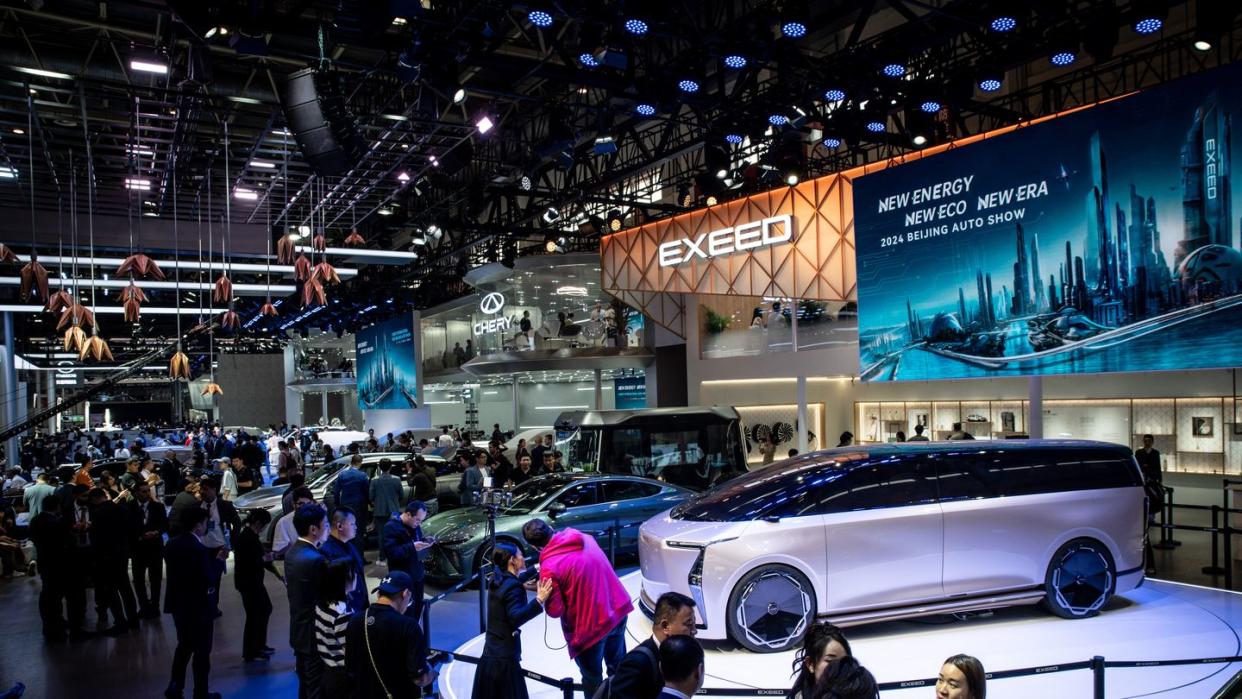
At the Beijing auto show, it's impossible not to notice how many truly affordable EVs—and ever-improving batteries to offer more and more range—are on the scene here.
Another trend is the proliferation of domestic brands never heard of before.
Auto Beijing opened to media on April 25, and the public days run through May 4.
A proper EV for under $7500 in U.S. money? No problem; there are stacks of those in China. An electric Smart (remember that three-cylinder microcar?) with a nuclear 646-hp drivetrain under its belt? Check out the rugged #5 (below). Plug-in hybrids with a range of 1250 miles? BYD, Chery, and Geely would be proud to oblige. The world's first production-ready long-range solid state energy pack? Developed and made in China, these are due to come onstream next year at the latest. A luxury SUV that can swim across a lake, or a battery-powered flying car? Piece of cake—the megabucks YangWang U8 floats like a duck, while the super-light XPeng Aeroht takes off like a kite. Look elsewhere for fake news; these and other dream objects are for real at the Beijing auto show, which opened to the public today.
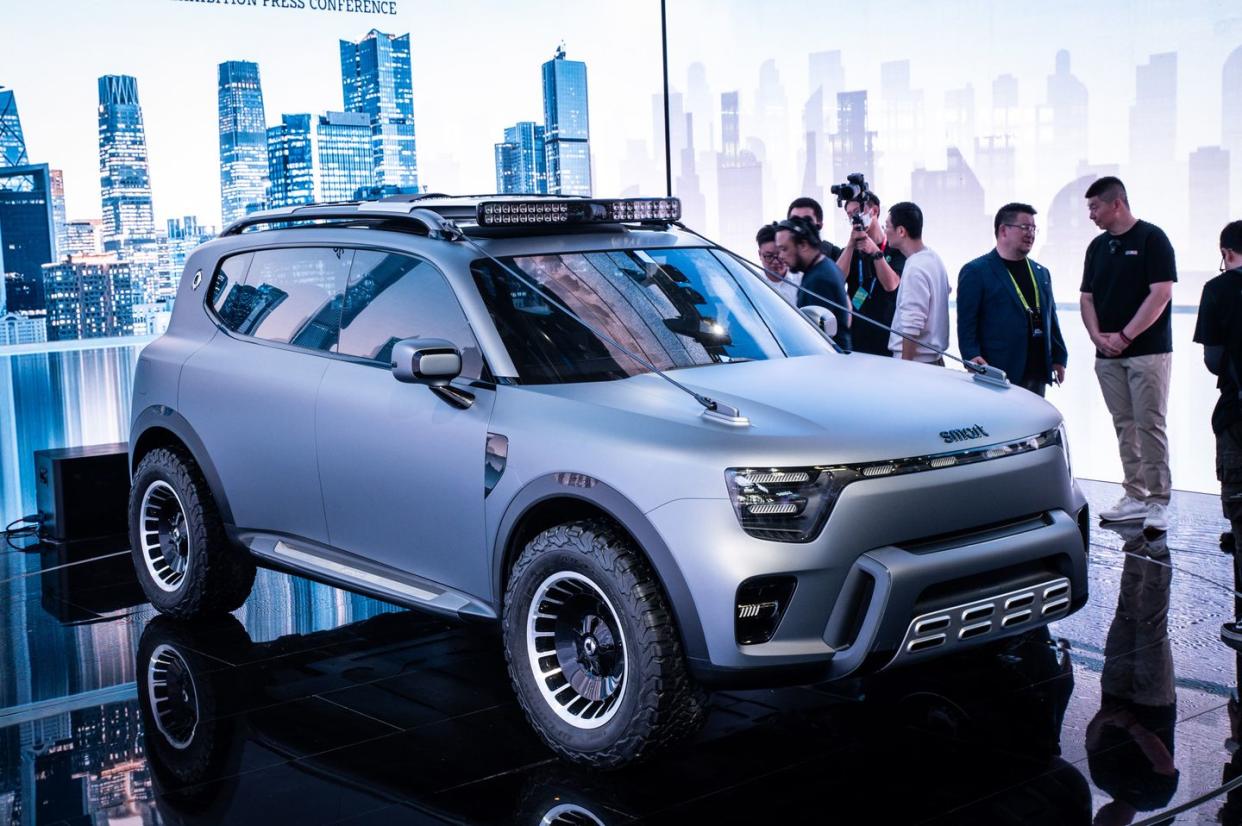
Once again, the domestic automakers pulled out all the stops for what must now be the greatest car show on earth. Staged annually alternating with Shanghai, China Auto never ceases to surprise and delight. In 2024, we are seeing never-heard-of brands like Onvo, Fang Cheng Bao, Mona, and Stelato, together with a glut of new models in all segments and a wide choice of advanced technologies, be they software-driven or spurred by breakthrough hardware.
But all that glitters is not gold. The transparent number of manufacturers and products is struggling to gain a firm footing in an already crowded market. Oversupply and slowly waning demand keep triggering cutthroat price wars, more and more cars look confusingly similar inside and out, and although the government supports this industry where it can, only a dozen or so of the close to 100 players are fit enough to survive the inevitable selection process.
Right now, however, the community is in a party mood. With COVID no longer an impediment, the economy is almost back on track again, consumer confidence has returned, and thanks to a boost of national pride, local brands are fast gaining momentum. The authorities comply by prolonging subsidies and fast-tracking the charging infrastructure, which is set to grow from 1.1 to 1.5 million hookup points by 2028.
At the same time, the car industry is launching one affordable New Energy Vehicle (NEV, an acronym that includes plug-in hybrids) after the other. The cheapest zero-emission model—China's answer to the Japanese kei car—is currently priced under $6000. Four of last year's bestselling NEVs are priced under $11,000, and there are three more that would set you back less than $21,000. While the popular Wuling Hongguang is too basic for exportation, others like the $10,000 BYD Seagull and the $20,500 GAC Aion S are bound to worry the foreign competition.
Solid State Batteries, Battery Swapping
In addition to independent battery suppliers including CATL, Gotion, and Whale, Chinese carmakers have become experts at building their own energy packs. In Beijing, Nio revealed its latest 150-kW WeLion power pack. It made headlines until a previously unknown startup named Talent New Energy presented its lithium metal solid-state battery. That miracle cell is allegedly good for up to 1250 miles between charges.
The fastest-charging vehicle is no longer a Tesla or the new Taycan but the Zeekr 001, which went from 400 to 800 volts to complete the standard 10 to 80 percent charge in only 11 minutes. Trouble is, it needs a rare ultrafast 600-kW charger to fill up for the next 296 miles, so Geely (Zeekr's parent) promised to install 1000 of these special docking stations by the end of the year.
BYD unwrapped its second-generation Blade battery, which found its first home in the Ocean M hot hatch (below), based on a new rear-wheel-drive architecture, which looks like a Hyundai N fighter.
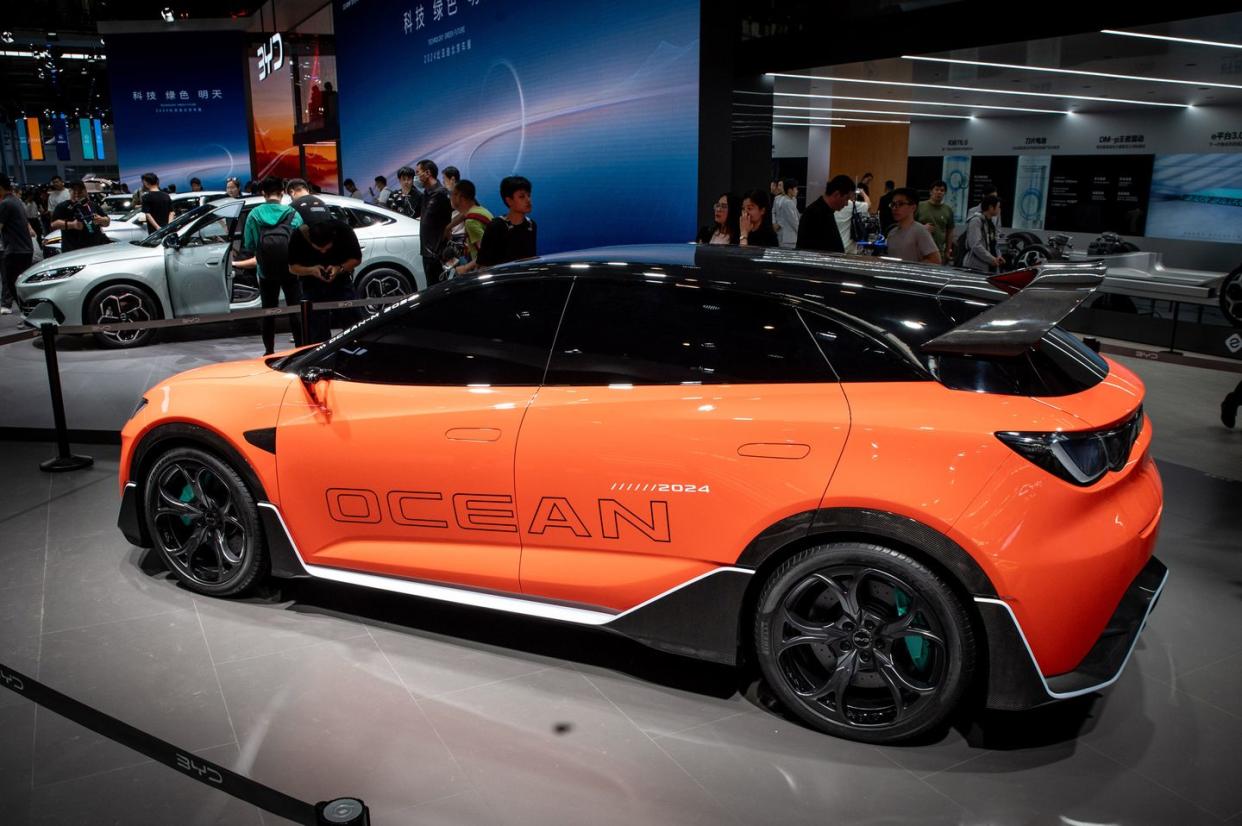
If charging is not your thing, battery swapping might be a more attractive option. At least that's the business model proffered by Nio and its system partners Changan, JAC, Chery, and Geely, with Volvo and Polestar in tow. Even though Nio wants to have 4000 swapping stations in place worldwide before 2025 runs out, commercial success may be thwarted by fast-forward battery evolution, the compromised one-size-must-fit-all packaging, and high costs for the stand-alone infrastructure.
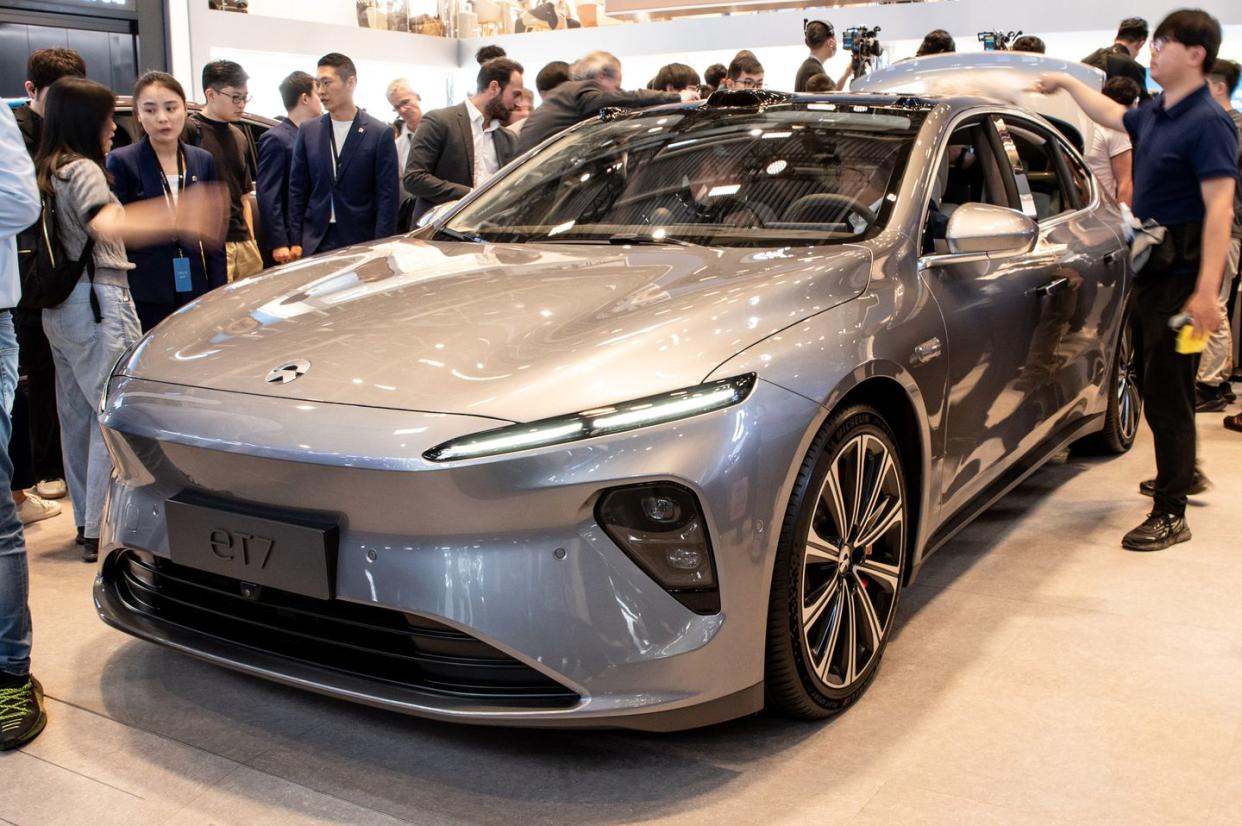
Even though the company is reportedly losing thousands on every vehicle sold, the new Onvo brand launched at Auto China and next year's Firefly, aimed exclusively at European customers, both feature battery-swapping systems. Will Nio ever be profitable? Since it was established in 2014, cumulative sales have yet to exceed 500,000 units, and that doesn't bode well for a player that spreads its investment over 10 different look-alike models, not counting the two sub-brands.
Domestic Brands Proliferate
BYD (Build Your Dreams) sold 2.5 million cars in China last year, a 43 percent increase that propelled the local hero past VW (2.2 million), Toyota (1.7 million), and Honda (1.2 million). The other two Chinese brands in the 2023 top 10 were Changan, which specializes in affordable small and mid-size cars (1 million), and Geely, another multibrand outfit (915,000). At the Beijing show, BYD displayed the Qin L and Seal 06 PHEV sister models, but the more significant new arrival was without a doubt the good-looking Sea Lion 07 crossover (below), which challenges the bestselling Tesla Model Y with a truly luxurious interior and an aggressive price.
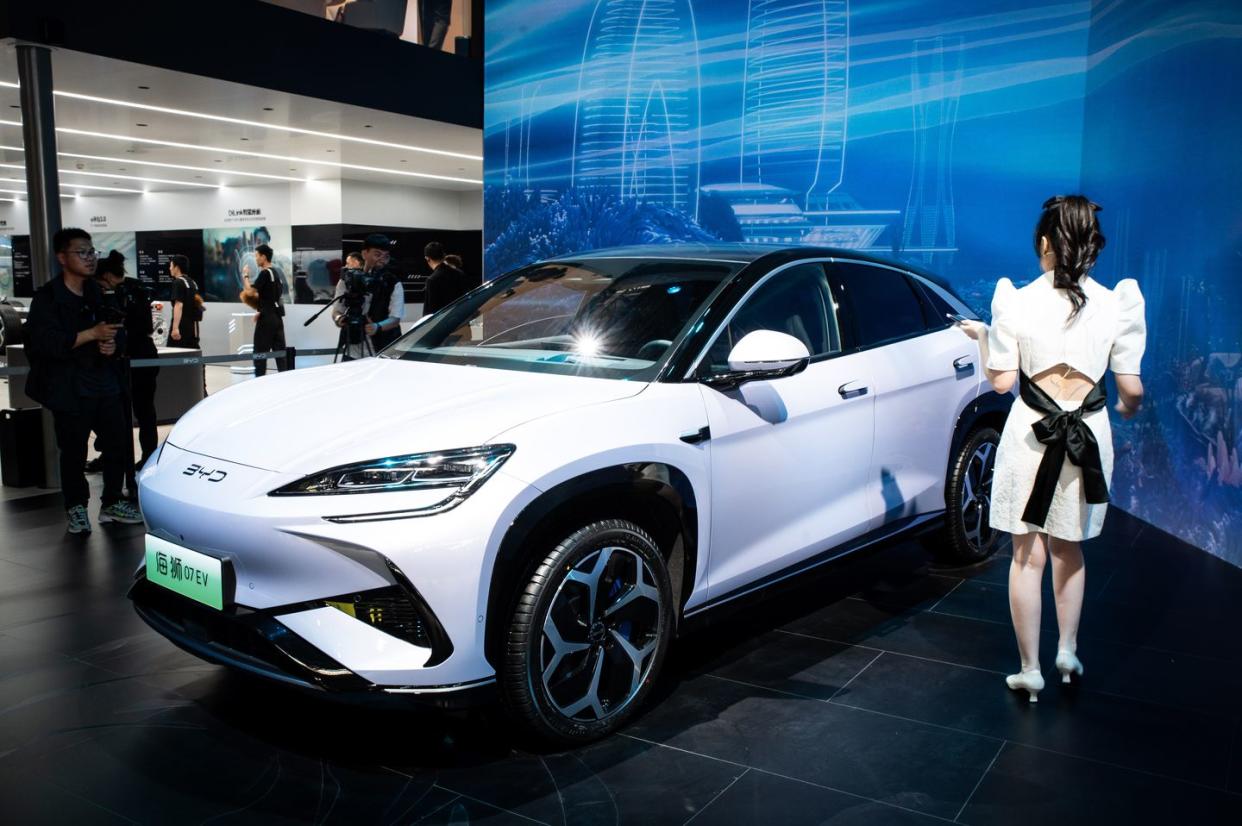
All models built by BYD and its sub-brands are the work of Wolfgang Egger (formerly of Alfa, Seat, Lancia, Lamborghini, and Audi) and his team. European and American designers are the flavor of the decade in China. Influenced from day one by Porsche's lineup, their work may look imitative, but it sells.
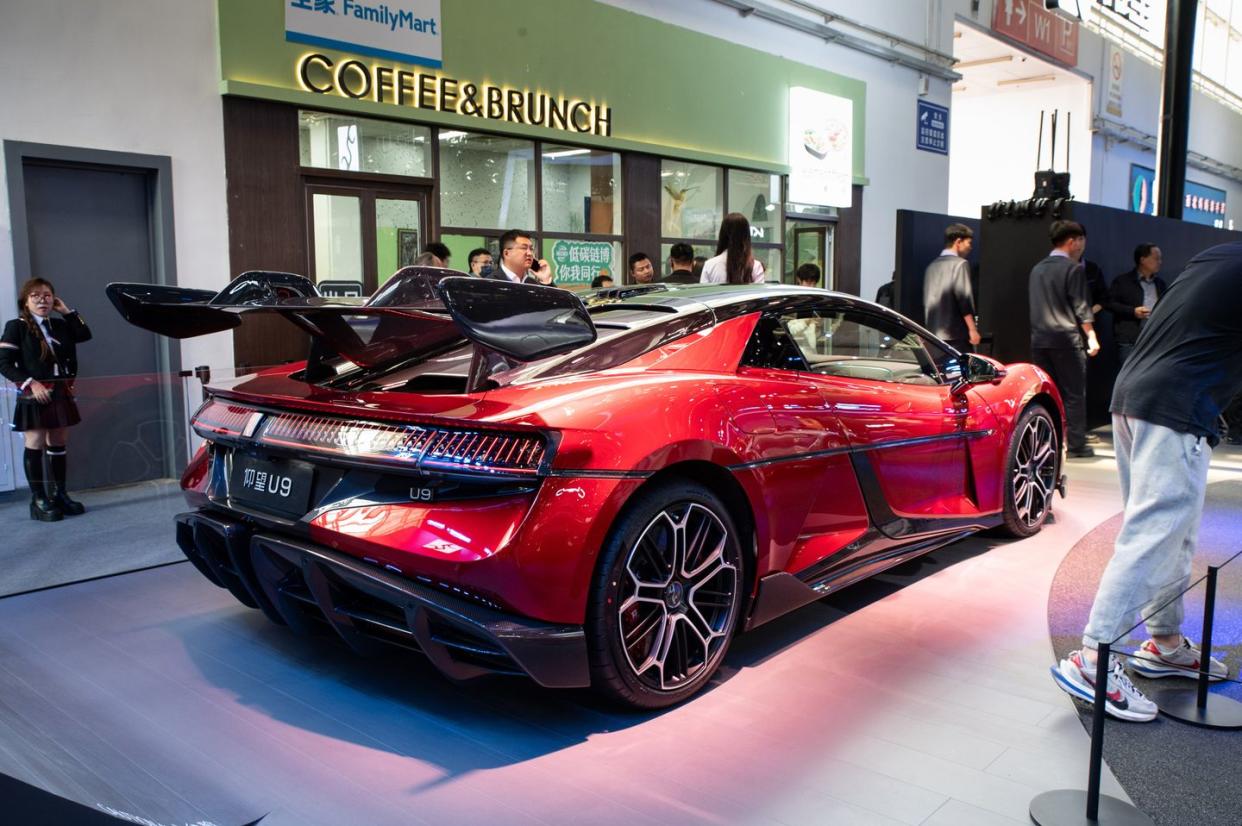
In addition to the core brand and its three channels, the Shenzen-based dream merchants are nursing three upmarket divisions: YangWang, Denza, and Fang Cheng Bao, a young outdoors-oriented marque launched last June. YangWang sells pure electric luxury, like the $140,000 U8 G-class rival, the U9 supercar (above), which has yet go into production, and the U7 S-class-size sedan, which debuted here.
Denza will eventually have five lineups under the initials D, E, N, Z, and A, offering a wide selection of near-premium EVs and PHEVs. Its latest effort is the Z9 GT high-end shooting brake evidently inspired by the Porsche Taycan and Panamera.
Fang Cheng Bao (Chinese for "formula leopard") launched the Bao 3 at Auto China, a funky compact electric SUV priced from around $27,000, and the Super 9 roadster (below), a one-off that looks a bit like a reborn SLR McLaren Stirling Moss or a reimagined Italdesign Aztec.
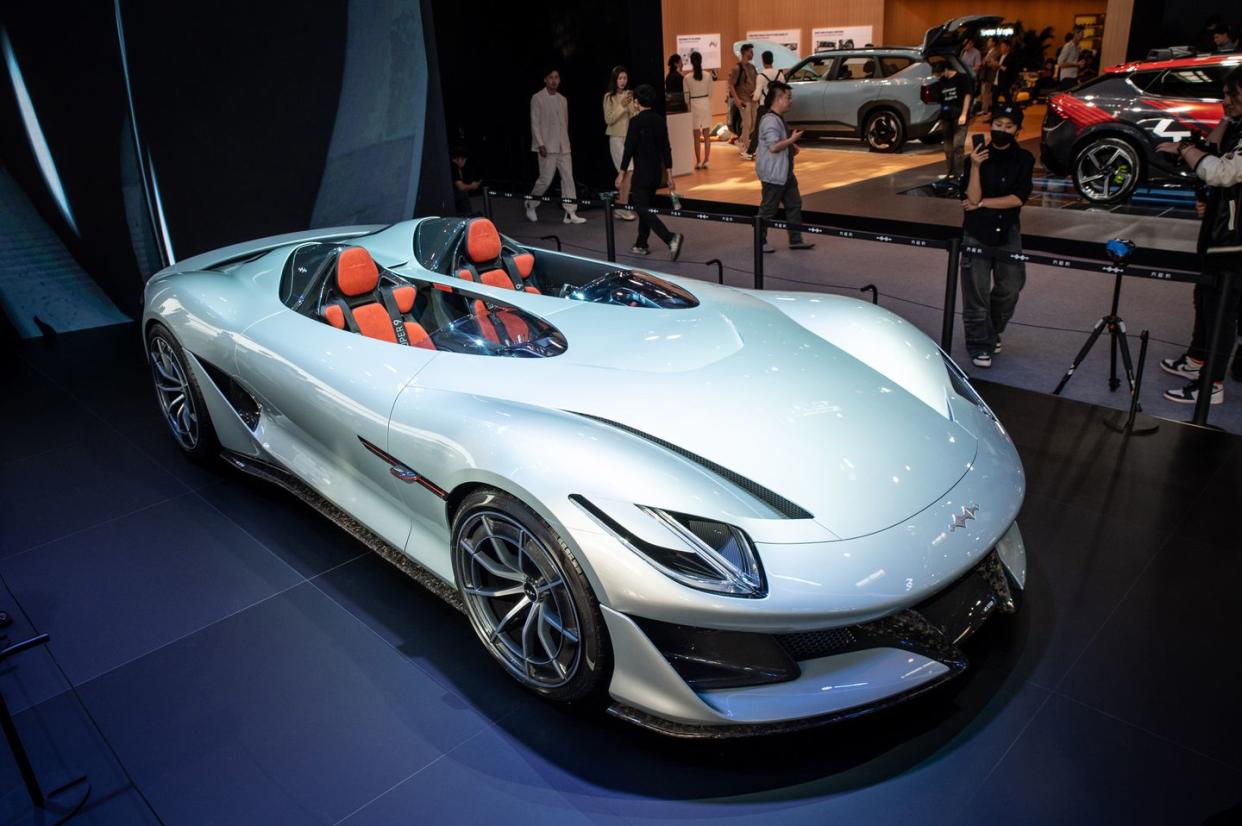
Vacuuming Robots, Crossbrand Allegiances
Autonomous driving is another big thing in China, where commuters spend hours in stop-and-go traffic. Cooperation is the name of the game when it comes to pairing AD software with a predominantly upmarket set of wheels. Recently forged alliances include pony.ai with Toyota, to be followed soon by Toyota with Huawei and Momenta; Haomo DriveGBT and Great Wall Motor; GAC/Aion and Didi (Uber 's chief rival here); and Horizon Robotics and Volkswagen.
In record time and on a tiny budget, the Chinese software specialist developed the self-driving talents of the brand-new VW ID.Code 01 concept (below). Conceived "in China for China," the chic and sleek CUV features a stowaway steering wheel and a robot that vacuum-cleans the vehicle when parked. Due later this year is the China-only ID.UX sub-brand, which will enter the market with the VW sibling of the locally built Cupra Tavascan.
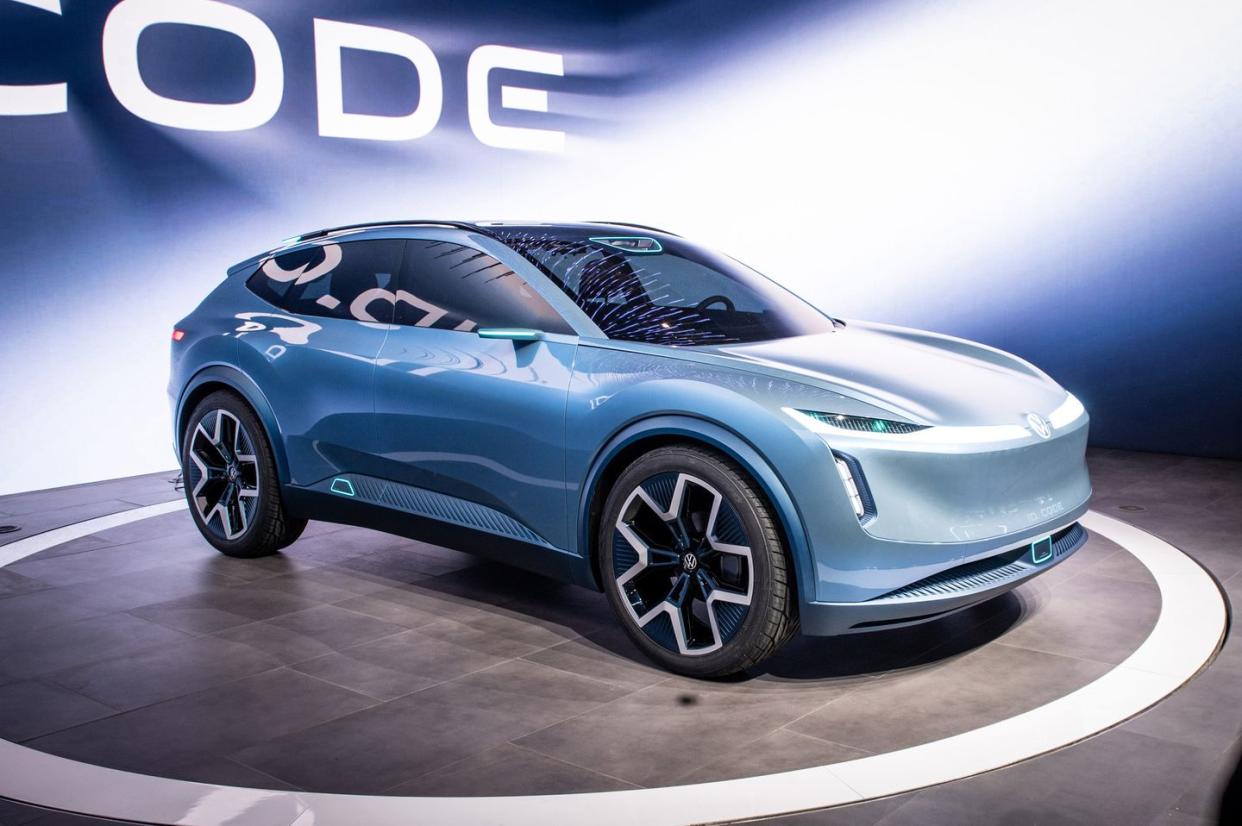
More and more often, Chinese carmakers are collaborating with crossbrand allies like software giants, telecommunication companies, and internet trading specialists. This year's undisputed co-op shooting star is the Xiaomi SU7 (below), which found 100,000 takers before the first car was delivered to a customer. A sleek Taycan clone priced from around $28,000, the SU7 boasts Xiaomi's own L2++NoA (navigate on autopilot) system certified for 100 Chinese cities. Other integrated tech includes the brand's Ecosystem and Hyper MMI. Similar money buys the IM L6 notchback and the Luxeed L7; IM belongs to the SAIC Group, while Luxeed is a joint venture between Chery and Huawei of laptop and smartphone fame. Both models offer Level 2+ capability, 60-mph acceleration times of under three seconds, and between 535 and 625 miles of maximum range, in the case of the L6 thanks to a new 133.0-kWh solid-state battery. Are you still wondering why the rest of the automotive world is worried sick?
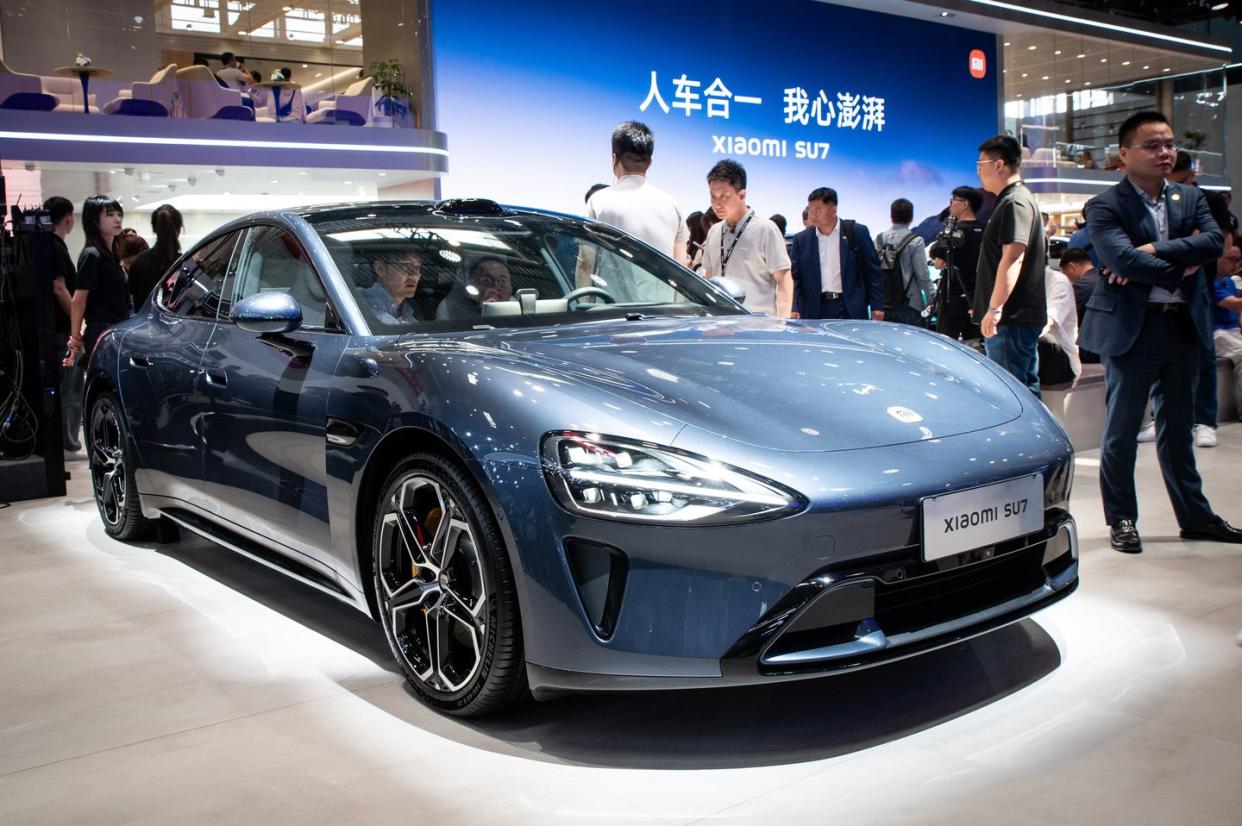
Ventures
Almost all fresh products on display in the International Exhibition Center break old records and set new standards in terms of efficiency, performance, software-defined qualities, value for money, range, and charging time. But in the eyes of the increasingly ambitious Asian strategists, that ́s not good enough to keep the competition at bay, Innovation is a fickle thing, and who knows where the next revolutionary battery (South Korea!) or the next magic electric motor (Germany!) might come from? So in China, the domestic brands are not merely ticking all the conventional boxes; they also put a lot of effort into soft values like positive user experience and feel-good emotions—the kind of stuff their European and American rivals hesitate to spend money on. In contrast, the Asians never tire of addressing the inner child. As a result, the in-car karaoke system is one of the most popular options.
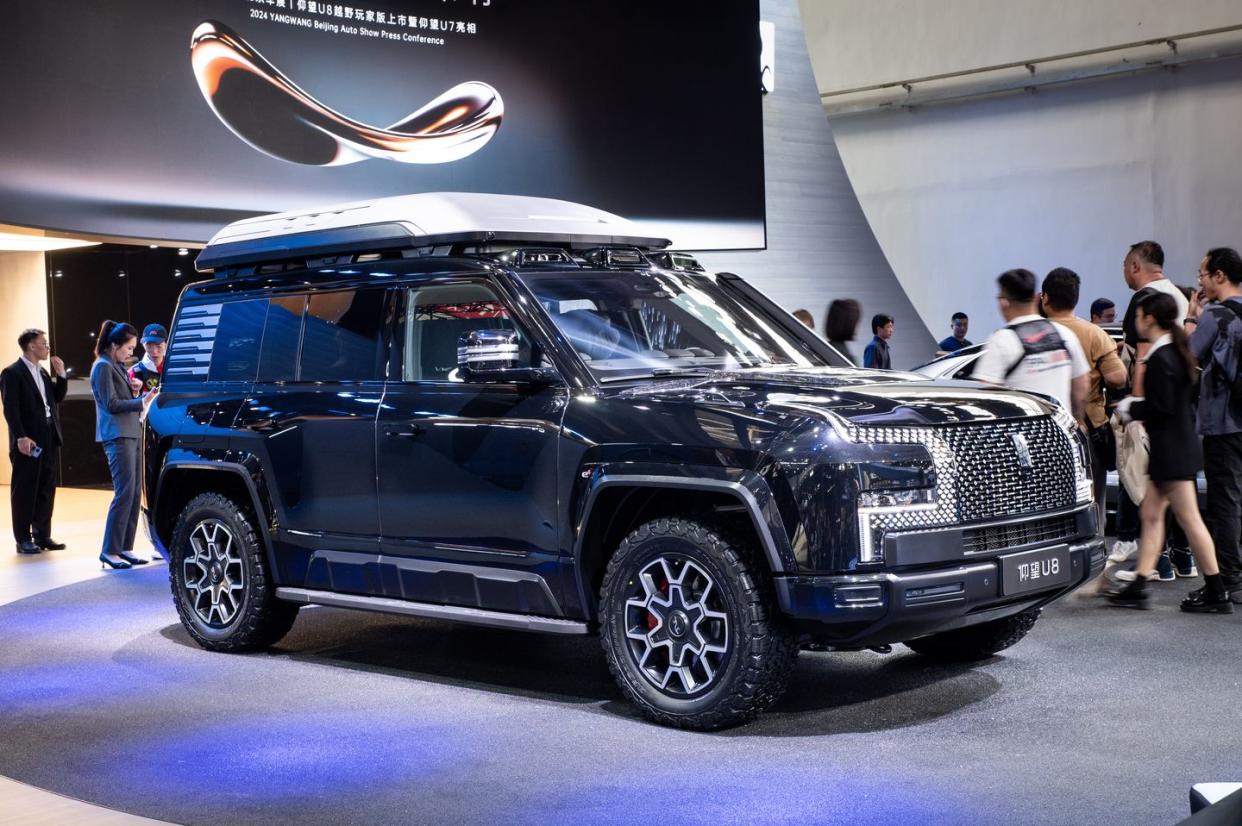
Not crazy enough? Then zoom in on the aforementioned YangWang U8 (above), which can be ordered with a $14,000 roof-mounted drone capable of tracing and chasing your worst enemy thanks to over-the-air face recognition.
There are many more fuzzy skills to be discovered. Like multi-modality interiors with face, fingerprint, eyesight, and even emotion identification. Or in-dash AI via self-learning LLMs (large language models), long-reach multi-mode ultra-wide-band digital keys, rotating touchscreens as seen in the BYD Qin L, or major updates of good old gesture control. One extreme example is the active suspension pioneered by Nio on the ET9, which can step like a stork over sleeping police officers or shake a load of snow off its body after a cold winter night.
Doubters, please simply watch that You Tube video. Almost anything is possible in China, where avatars are commonplace digital in-cab assistants on all screens all the time, sometimes a little loud but always one digital step ahead. Luxing yukuai– safe journey!
You Might Also Like
